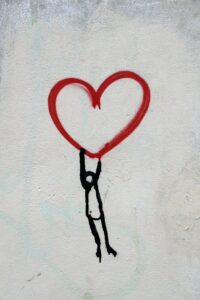Primitive reflexes are subconscious responses to certain stimuli seen in new-born babies and they work like a set of innate survival skills. These reflexes are important in assisting the baby through the birthing process and for keeping brand new babies safe and thriving. (Fysh, 2002)
40 weeks is considered a full –term pregnancy (Fysh, 2002) and results in a cute and chubby little human. However, the nervous system governing the movement, sleeping, interaction with mum and dad and aversion from danger of that little human is far from mature. (Fysh, 2002) Luckily new-borns are equipped with these handy reflexes to get them through the first few months of life as their brains and nervous systems continue to develop and organise themselves.
Something else to note is that the integration of most of these reflexes is also really important, because if they linger around longer than they should be, they can be sign that brain and nervous system is not maturing at the usual rate and that some assistance might be helpful and needed. (Fysh, 2002)
Let’s take a look at some of the main reflexes, why babies have them and by what stage they should be integrated and no longer be present.
What It Is: Moro (or startle) reflex

Check It Out: Sit your baby upright for a few seconds with your hands lightly gripping their underarms, and your fingers supporting their neck then suddenly but gently lower them back a bit. They will throw out their arms and legs and extend their neck, as if to say, pick me up! The purpose of this reflex is as a survival mechanism, to alert, arouse and summon assistance.
Loud, unexpected noises may elicit this reflex, and they may even cry when especially startled. One of the benefits of swaddling a baby to sleep is that you reduce the chance of the Moro reflex being stimulated and waking the baby from their slumber.
When It Disappears: Around two months – 4 months
(Fysh, 2002)
What It Is: Grasp reflex

Check It Out: Stroke your baby’s palm with your finger. They will immediately grab your finger and hold on so tight you might have to pry their little fingers off. It’s their way of holding you and trying to get as much skin-to-skin contact as they can. If you stroke the sole of their foot, they will curl up their toes in the same way, too.
When It Disappears: Gradually, around 2-3 months
(Fysh, 2002)
What It Is: Tonic neck (or fencing) reflex

Check It Out: When your baby is lying on their back, gently turn their head to the right. Their right arm will shoot out in front of them and they will raise their other arm above their head. They will do the same thing on the opposite side if you turn their head to the left. This reflex assists the baby’s active participation in the birth process and is also helpful for your baby to learn to focus on their hand that’s is suddenly out in front of them, which is a building block for hand – eye co-ordination and depth perception.
When It Disappears: by 6 months
(Fysh, 2002)
What it is: Spinal Galant Reflex

Check it out: stroke one side of the lumbar paraspinal muscles (muscles just lateral to the spine in the lower back) and this will cause contraction of those muscles and hip flexion on the same side. This reflex appears to help with the birth process. However, be careful when testing this reflex as bilateral stimulation of the lumbar paraspinal muscles is associated with a reflex that causes urination J
When it disappears: between 3 – 9 months
(Bladt, 2014)
What It Is: Rooting reflex

Check It Out: Stroke the side of your baby’s cheek with your fingers or breast and they will turn their head toward it, open wide, and begin to make sucking movements with their mouth. This most basic of survival instincts can be a big help to nursing moms trying to teach their babies to latch on. NB: best to look for this reflex before a feed, as the response may be reduced when a baby has just recently been fed.
When It Disappears: About four months.
(Fysh, 2002)
What it is: Tonic Labyrinthine Reflex (TLR)

Check it out: Hold your baby securely in two hands , one supporting the under their bottom and one supporting the head and neck , gently flex and then gently extend the neck and watch to the associated limb movement. A normal response is to see the limbs to bend when the neck is flexed and to straighten when the neck extends. This reflex gives information to the baby about where their head and body are in space and is designed to develop their sense of balance.
When it Disappears: Flexion- 4 months and Extension – up to 3 years of age
(Bladt, 2014)
What It Is: Tongue-thrust reflex

Check It Out: Touch a baby spoon to the tip of your baby’s tongue and watch them push it back out. This reflex prevents them from choking on foreign objects.
When It Disappears: Between four and six months, which is one reason why it doesn’t usually make sense to attempt solid feeding any earlier—except in the rare instance of gastroesophageal reflux disease (GERD), when extra nutrition is required and recommended by an appropriate health practitioner.
Assessment of these reflexes in babies along with checking in on the integration of the reflexes as kids grow gives us another tool to assess the development and maturity of the nervous system and overall brain function in children. Assessing primitive reflexes is often a great way to recognise challenges an individual might face when it comes to function and even learning abilities. Early detection allows for earlier intervention and assistance when needed.
If you have done some of the checks on your child at home and noticed some differences from the expected response or if you would like to have your little one’s primitive reflexes along with other nervous system function checked please contact our office on (02) 9413 3090 or ask us next time you are in to see us in person. We are always happy to help enhance the health and lives of all generations through excellence in wellness chiropractic care!
References
Bladt, D. (2014). Switched on Kids Seminar . Sydney: Dorte Bladt.
Fysh, P. N. (2002). Chiropractic Care for the Pediatric Patient. Arlington, Virginia: International Chiropractors Association Council on Chiropractic Pediatrics.



